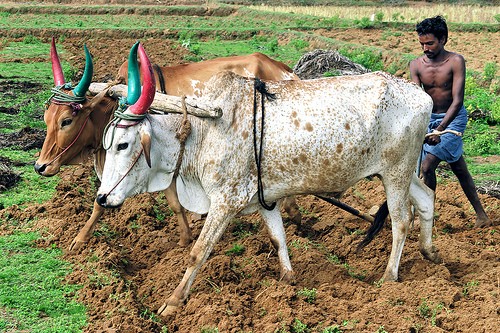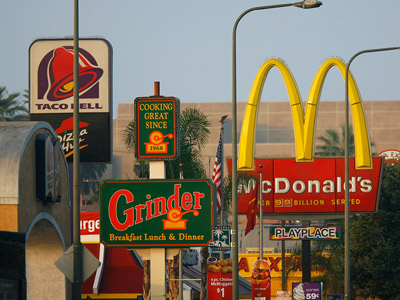The World Bank estimate that 41.6% of India lives below the international poverty line. That means that as many as 410 million Indian citizens are living on less than $1.25US a day. If correct, this estimate implies that 1/3 of the entire world’s poor live in India, meaning that the importance of poverty reduction is exceptionally relevant to the country. In the past 20 years, great gains have been made in reducing the number of poor encapsulated in these daunting statistics, but India is faced with an obligation to continue to reduce the number of people living in poverty. India’s impressive growth has disproportionately benefited certain geographic and social groups. For India to truly become a country that epitomizes the future of change, the wage gap and the economic inequality that accompanies it must be eliminated.
A multidimensional approach is required to address the problem of income inequality because the growing wage gap in India is not strictly an economic issue. Public policy must be designed to create social opportunities that are not generated by the market mechanism. While at the same time, economic policy must be in place to entice investors to emerging high technology sectors. For growth to be inclusive, this economic policy must not be exclusive. In other words, economic policy must include protections for more traditional sectors, and for agriculture in particular.
This multi-lateral approach may not be simple but it is essential. A comprehensive solution to income inequality will protect the rural poor without stifling emerging industries. Public policy must provide a social safety net for the un- or underemployed and provide educational opportunities for the work force to gain skills. Economic policy will present the challenge of protecting and increasing the productivity of domestic agriculture, while simultaneously fostering innovation in high tech sectors.
India has had amazing growth in the past two decades. Now one of the most important emerging economies in the world, India has a special opportunity to craft a future of prosperity for all its citizens. While conventional GDP growth is impressive, this newly created wealth has been concentrated and unequally distributed. The improvements in income and standards of living have not filtered down to those living in poverty. This is likely because the idea of a “trickle-down” effect is both outdated and empirically wrong. It is a incorrect notion based on the assumption that markets will solve market problems. While markets may be able to select for efficiency in firms, markets are not moral. The well being of all citizens of our increasingly globalized world requires direct attention to the market failures that give rise to issues surrounding inequality and deepening poverty.
It is impossible to overemphasize the importance of education in ending poverty and inequality. Investment in education will empower a skilled population to take advantage of the opportunities provided in a global trade system. Continued investment in schools and scholarship is therefore essential to maintaining India’s current level of growth. Simultaneously, India must invest the infrastructure that will provide an educated public with skilled labor opportunities. Skills, however, take time to acquire, and industries in which skilled labor is demanded do not emerge overnight. In the interim, in order to foster this more prosperous future, India must not neglect the immediate investment necessary to protect the livelihoods of the most vulnerable.
The true challenge lies in accurately allocating funds for both urban centers and rural communities. It cannot be denied that urban centers are the engines of economic growth in our increasingly globalized world. As IT, service sectors and tourism industries are established in Indian cities, it is natural and necessary to increase government funding for urban infrastructure; but it is essential that this funding not come at the expense of rural communities. By promoting and protecting IT and service sectors, while making the agricultural industry more susceptible to international competition, India is in danger of perpetuating the growing gap between rich and poor. For a large rural population, agriculture is a fundamental source of income. Thus, by protecting domestic agriculture, India can ensure food security and safeguard rural livelihoods.
Historically, state intervention has favored industry over agriculture. This can be a positive influence on increasing GDP, but it does not help to eliminate poverty or reduce inequality. This is because many of the poor live in rural areas and are dependent on agriculture as a source of income. In fact, some estimates claim that up to 75% of India’s poor live in rural areas. Thus, one of the hidden creators of income inequality is underinvestment in the agricultural sector. As investment flows into cities, wealth creation is concentrated in urban centers. While it is incredibly important to foster industry, this kind of specialization cannot take place at the expense of the agricultural industry. Not only is a robust agricultural industry important to national food security, it is also essential to ending the wage gap.
Policies that incentive industrialization must therefore be balanced with policies that protect traditional sectors such as agriculture and set aside funds for research and development. Creating policy exclusively for the benefit of industrialization leads to artificially high profits for entrepreneurs without much immediate growth in employment. Thus, a loss of agricultural income, compounded by low job creation in industrialized sectors, means that the loss of jobs in food production is not offset by job creation in new industries. In this way, the increase in capital efficiency becomes concentrated in the hands of an elite few urban entrepreneurs.
India must increase investment in agriculture through research and development of more productive crops and growing methods. Rural employment is dependent upon the agriculture sector. A stable agricultural sector creates jobs, even for the landless laborers and day-wage earners who do not raise their own crops. As agriculture becomes more productive and thus more profitable, a greater number of rural inhabitants will have the economic means to move to urban centers and consume modern technologies. Concurrently, the increase of food availability can support a larger urban population, freeing up labor to allow the specialization of high technology centers to more forward.
Communities, families and individuals must be empowered to participate in, and take advantage of, the economic environment created by global trade. Equal access to opportunities will ensure that the incomes of rich and poor no longer diverge at a drastic pace. Investment in education will allow a greater number of citizens to acquire demanded skills, but this kind of investment is only useful if there is simultaneous expansion of infrastructure that creates future skilled employment opportunities. Funds must therefore be invested in urban infrastructure and technological specialization, but financial support should be equally allocated to rural development and agriculture.
The policies that will create an equally prosperous future will require coordination, substantial financial backing and state involvement. As Joseph Stiglitz observed: the market and the state are complements, not substitutes. Since markets are not moral, the state must intervene to correct for the market mechanisms that have forced the poor into deeper poverty. To meet Prime Minister Singh’s goal of “inclusive development,” new pro-poor policies must be implemented to ensure the India’s high growth is more equally distributed. It is increasingly apparent that inclusive growth requires inclusive policies. Marginalizing the agricultural sector only results in marginalizing the percentage of the population whose livelihoods are dependent on farming. Through correct allocation of funds to education, urban infrastructure as well as agriculture, India can prevent the wage gap from worsening and provide better future for all citizens- rural and urban, poor and rich.






